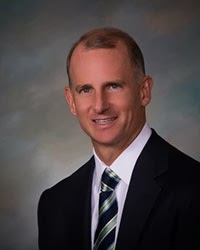By Anthony M. Puntillo DDS, MSD
 In August 2014, I wrote an introductory article for this blog entitled “What is Big Data and How is it Related to the Practice of Orthodontics?” As more orthodontic practices move to the digital collection of orthodontic treatment records (EHRs-photos, models, radiographs, treatment history) and more of our data is being stored in the “cloud”, there is a tremendous opportunity for us as a profession to access that data for the betterment of our patients and advancement of our specialty. Over the last ~3.5 years, however, there has been little visible traction by our researchers and leadership on this front. Meanwhile, there should be no doubt that corporate entities (DSOs and orthodontic vendors) understand the value of our data. Check out the recent cover article for Fortune Magazine (“Tech’s Next Big Wave: Big Data Meets Biology” -3/19/2018). The article notes that “The quest to retrieve, analyze, and leverage (medical) data has become the new gold rush.” If orthodontists are to hope to have any influence on how orthodontic treatment is delivered in the future, management of our patients’ data will be crucial. Technology has sped up every aspect of our lives. We must now start to give this issue the attention it desperately demands. But where should we begin?
In August 2014, I wrote an introductory article for this blog entitled “What is Big Data and How is it Related to the Practice of Orthodontics?” As more orthodontic practices move to the digital collection of orthodontic treatment records (EHRs-photos, models, radiographs, treatment history) and more of our data is being stored in the “cloud”, there is a tremendous opportunity for us as a profession to access that data for the betterment of our patients and advancement of our specialty. Over the last ~3.5 years, however, there has been little visible traction by our researchers and leadership on this front. Meanwhile, there should be no doubt that corporate entities (DSOs and orthodontic vendors) understand the value of our data. Check out the recent cover article for Fortune Magazine (“Tech’s Next Big Wave: Big Data Meets Biology” -3/19/2018). The article notes that “The quest to retrieve, analyze, and leverage (medical) data has become the new gold rush.” If orthodontists are to hope to have any influence on how orthodontic treatment is delivered in the future, management of our patients’ data will be crucial. Technology has sped up every aspect of our lives. We must now start to give this issue the attention it desperately demands. But where should we begin?
If we are to tackle this challenge, there are many complex questions that will need to be answered. Our patients’ privacy is not the least of these. Even with our busy professional and personal lives, I imagine it has been hard for most to miss the recent public flogging of Mark Zuckerburg and Facebook. Both he and his company were taken to task by Congress and the media when they revealed that the personal data for 87 million of their customers had been inappropriately accessed by an outside research company. As a result of these disclosures, politicians are threatening regulations for their industry – think HIPAA for Silicon Valley. There are more than 2.5 million people who annually seek orthodontic treatment. As we look to find the best ways to utilize our patient’s treatment data to improve their care, we must make certain that it is being done in a way that is respectful of all patients’ privacy. While privacy may be where we start, there are other, even more difficult issues that need to be addressed.
The complexity of the Big Data issue will require the input from the brightest minds both from within and from outside of our profession. To that end, the Great Lakes Association of Orthodontists has put forth a resolution to this year’s American Association of Orthodontists House of Delegates. Resolution 18-18 GLAO (http://hod.live.aaoinfo.org/resolution2/18-18-glao-big-data-task-force-and-records-repository/) requests that our Association President appoint a Big Data task force. I would encourage you to review the resolution and let your representatives (HOD Delegates) know your feelings. While this issue is certain to require a significant investment of time, talent and financial resources, we cannot afford to leave this investment to outside sources. Those who control the data will control the future.